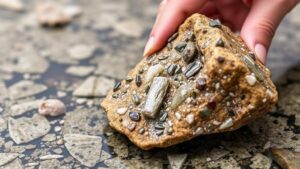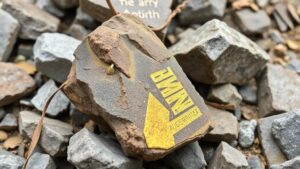How Gold Was First Mined in Alaska’s Fairbanks Mining District
How Gold Was First Mined in Alaska’s Fairbanks Mining District
The discovery of gold in the Fairbanks Mining District, which lies in the heart of Alaska, marked a significant chapter in American mining history. Beginning in the late 19th century, the area rapidly evolved from a remote wilderness into a bustling center of gold mining activity. This article examines the origins of gold mining in this region, exploring the methods used, the socio-economic impact, and the lasting legacy of this gold rush.
The Discovery of Gold
The first significant discovery of gold in the Fairbanks area occurred in 1902 along the banks of the El Dorado Creek. Three local prospectors, led by Felix Pedro, found gold using a simple panning technique, which involved washing soil and gravel from a stream bed to separate gold particles. This initial find triggered what would become known as the Fairbanks gold rush, attracting thousands of prospectors to the region.
- In 1903, gold worth approximately $122,000 was reported, attracting attention beyond Alaska.
- The influx of miners led to the establishment of Fairbanks as a town in 1901.
Mining Techniques
Mining in the Fairbanks District initially relied on primitive methods such as panning and sluicing. But, as the demand for gold increased, miners began employing more advanced techniques.
- Sluicing: This method utilized water to wash material through a sluice box, which captured gold particles while allowing lighter materials to be discarded.
- Hydraulic mining: Engineers used high-pressure water jets to blast away gravel and dirt, exposing gold-bearing quartz veins beneath.
By the 1910s, miners had begun to use more complex machinery, including dredges–large, floating, mechanically operated devices that dug up riverbeds and separated gold from the sediment. e dredges significantly increased productivity and efficiency, helping the Fairbanks district to yield over 100,000 ounces of gold annually at its peak in the early 20th century.
Economic and Social Impact
The gold rush dramatically transformed the local and state economy. At its height, Fairbanks became a crucial supply hub for miners, leading to rapid urban development. Businesses flourished, and industries related to transportation, food, and equipment emerged to support the mining activities.
- By 1910, the population of Fairbanks had surged to around 10,000 residents.
- The gold rush also precipitated the construction of essential infrastructure, including roads, bridges, and telegraph lines.
But, this period was not without challenges. influx of miners led to environmental degradation, as rivers and landscapes were altered to extract gold. Plus, Native Alaskan communities faced cultural disruption and displacement due to the rapid changes occurring in their ancestral lands.
The Lasting Legacy of Gold Mining
Today, the Fairbanks Mining District serves as a historical landmark, reflecting the potential of gold mining as a driver of economic growth as well as its environmental and social repercussions. The legacy of this gold rush is evident in various facets of life in Alaska.
- The region remains home to several active mines, continuing to contribute to the economy.
- Educational programs and museums celebrate the history of mining and its impact on local culture.
Also, the mining techniques developed during this period have informed modern practices, highlighting the importance of safety and environmental stewardship in current mining operations. Alaskas mining regulations now emphasize sustainable practices to mitigate the impacts of resource extraction.
Conclusion
The early days of gold mining in Alaska’s Fairbanks Mining District illustrate a complex interplay between opportunity and consequence. From the initial discovery of gold panned from riverbeds to the development of advanced mining technologies, this historical event not only shaped the economic landscape of Alaska but also serves as a case study in the benefits and drawbacks of resource extraction. Understanding this history offers insights for the future of mining practices and their socio-economic implications.
For anyone intrigued by gold mining, the Fairbanks Mining District stands as a testament to both the allure of gold and the responsibility that comes with resource exploitation. Continued education and awareness on sustainable mining practices can ensure that future generations benefit from both historical insights and responsible resource management.


